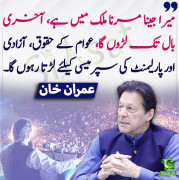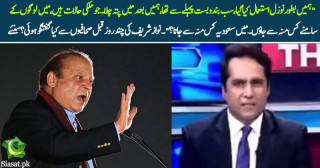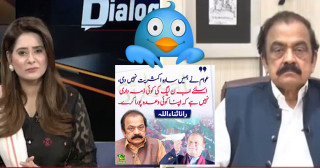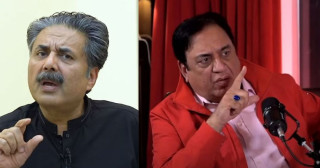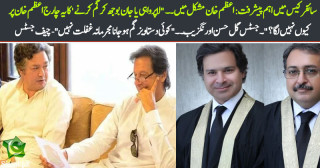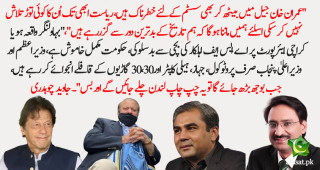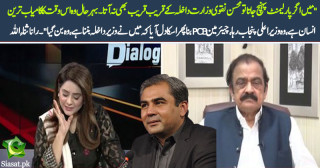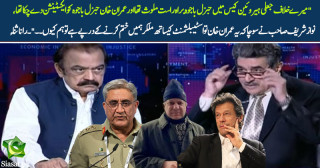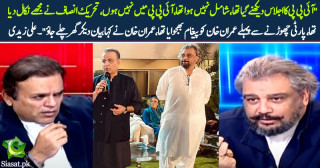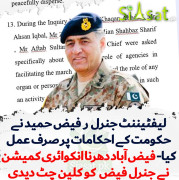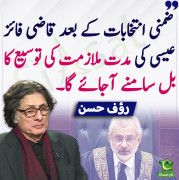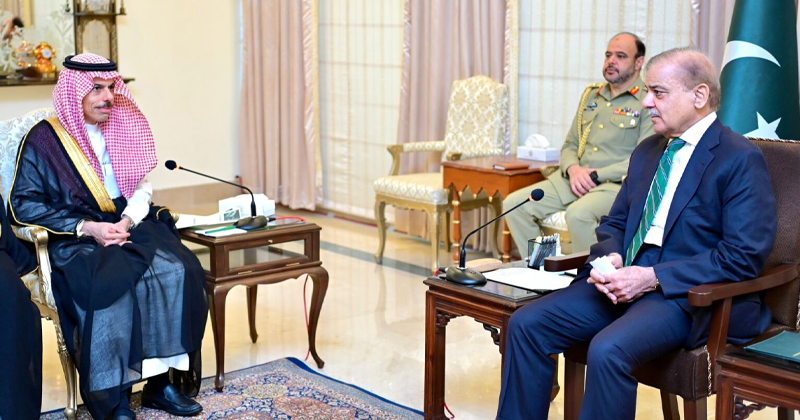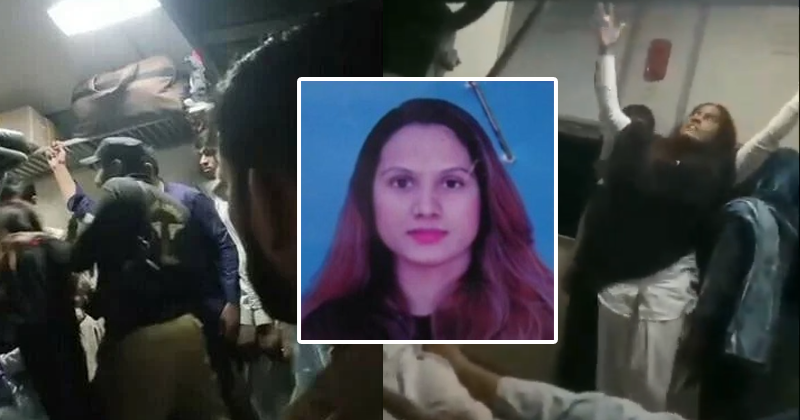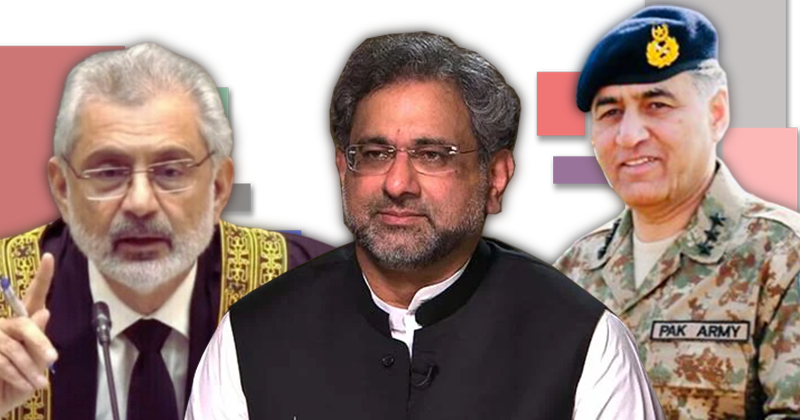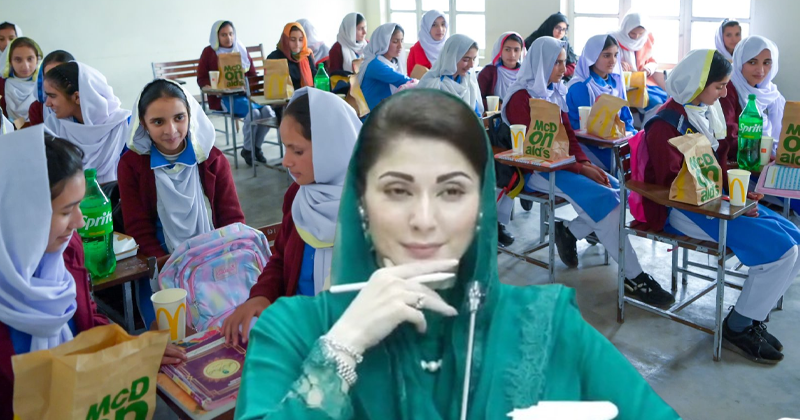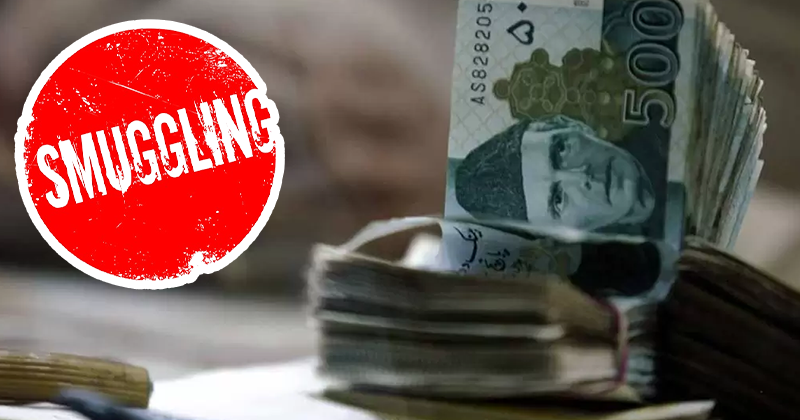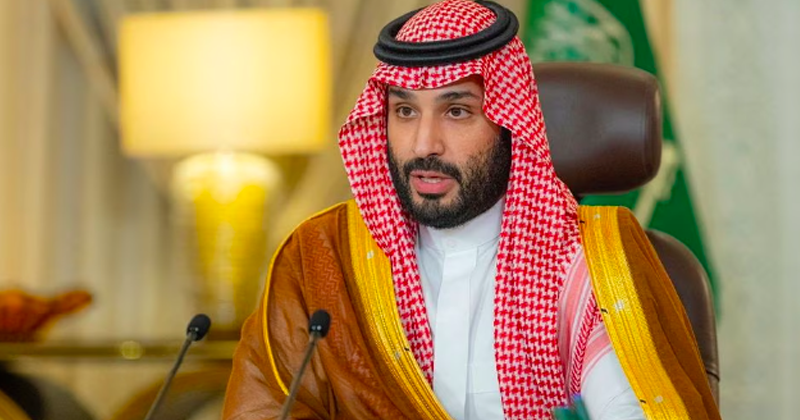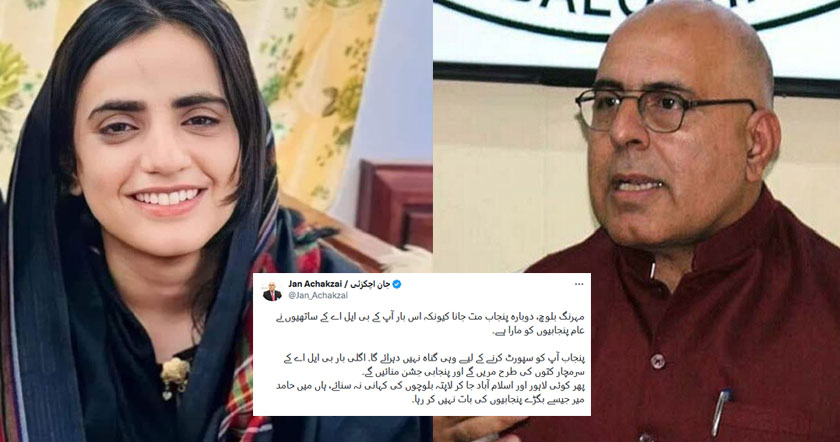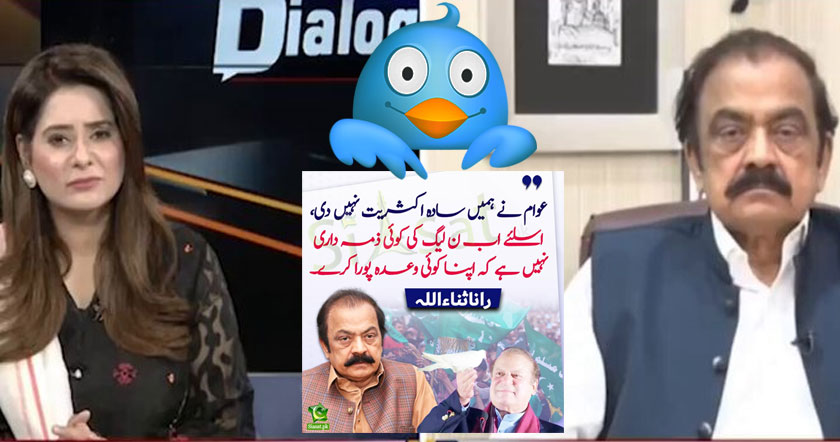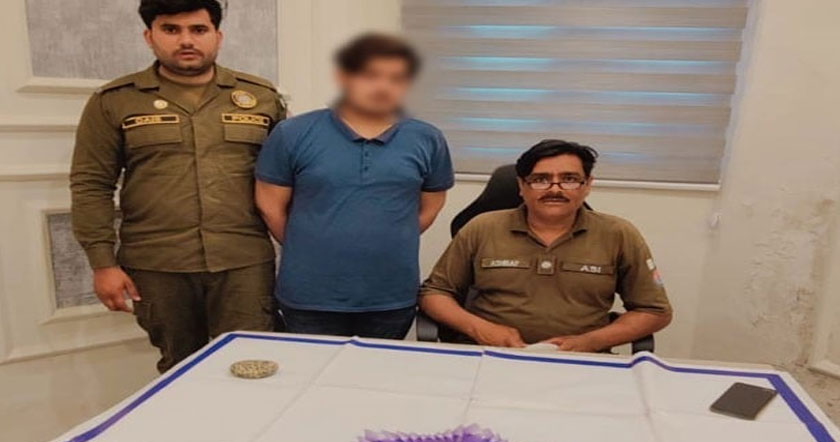PROUD SHORT HISTORY OF MQM [altaf]
All this were based on newspapers dailies Jang, Jasarat, The News , The Muslim, Nawa-I-Waqt,
Frontier Post , The Nation, Dawn , Jang, Pakistan Times and others
Yearwise detail of MQM's atrocities (Muttahida Qaumi Movement (MQM))
MQM came into being on March 18, 1984 from "All Pakistan Mohajir Students Organisation" (APMSO) but politically it got activated in 1986.
And from that year politics and history of Karachi took a bloody turn. The year wise details about the regime of terror which started in 1986, and about the story of horror, and blood and tears which still continues unfortunately, and also of the wicked leader "Quaid-e-Tahreek" of the same party who changed thousand faces all these years, and of the handful of elements who for their own interests used cheap tactics and created disturbance and violence in Karachi,
1986
MQM's first-ever public meeting at Karachi's Nishtar park on August 8, 1986, was marked by heavy aerial firing from the; pistols and rifles which the party activists were carrying on them. On that day, windowpanes of a traffic police kiosk opposite Quaid-e-Azam's mausoleum were broken, and stones were pelted on petrol pump near Gurumandir. Addressing the rally, Altaf Hussain said: "Karachi is no more mini-Pakistan. We will accept help no matter where it comes from, from east or west, north or south" (dailies Jang, Jasarat and other newspapers of August 9, 1986).
Two months later, on October 25, 1986, while addressing a press conference at Hyderabad Press Club, Altaf Hussain told the Mohajir youth to "collect arms. If our rights are not given to us, we will use every kind of force". On October 31, while addressing a public meeting at Hyderabad's Pakka Qila, he said: "At first we fought for freedom. Now that we have freedom, we are searching for a country" (daily Amn, Nov 1, 1986). Riots broke out in Karachi the same evening. Twelve persons were killed, 25 wagons, autorickshaws and motorbikes were set on fire, and four houses and eight shops were torched.
Riots spread to Hyderabad where seven persons were shot dead in two days. Curfew was clamped in both cities to contain violence, and Altaf Hussain alongwith ten others was arrested by he police on November 2 for attempt to murder and rioting. Nine other MQM activists were also taken into custody and firearms recovered from their possession, whereas 63 persons from other parties to the rioting were arrested from Sohrab Goth area. On November 3, ten persons were killed in hand-grenade attacks in Orangi Town area while six others died in street trouble, brining the week's death toll in Karachi to 52.
On November 18, armed MQM activists fired in the air to disrupt a cricket match in Hyderabad's Niaz Stadium. On November 21, at the end of a one-day cricket match between Pakistan and West Indies, armed MQM activists blocked all roads leading to Karachi's National Stadium. 30 persons received bullet wounds in indiscriminate firing in the Liaquatabad. Teen Hatti, Gulbahar, Orangi, Sabzi Mandi, Nazimabad and other areas of the city. A bank was burnt in Liaquatabad, while a bus was put on fire on Shahrah-e-Quaideen. One November 22, three buses and an oil tanker were burnt in Landhi, while a branch of the National Bank was ransacked and torched in Liaquatabad.
Another government bus and a minibus were burnt in Malir and Old Numaish, and several buses were pelted with stones on November 23. On November 24, 11 vehicles were burnt down in New Karachi, Federal B' Area, Paposhnagar, Gulbahar and Nasirabad. On November 28, armed clashes between MQM activists and the police took place in Hyderabad during which five bank branches were damaged and one bus put on fire.
MQM announced a strike in Karachi on December 9 and asked its followers to remain peaceful. The 'peaceful' strike led to the burning of 11 vehicles and seven bank branches. One youngster was killed, and nearly 40 wounded in indiscriminate firing. Demonstrators pelted stones on the police and a bomb was blasted near Liaquatabad police station. The police became helpless against protesters" (daily Amn). On December 14, MQM's secretary general Dr Imran Farooq stated that the situation could be brought under control only if Altaf Hussain and his companions were freed.
That night, 50 persons lost lives during ghastly manslaughter in Orangi Town. The army was called in and curfew clamped. According to newspapers, the entire Ghetto Township had passed into the hands of a group of klashnikov-weilding youngsters. 70 more persons were killed on December 15.
According to available statistics, as many as 173 persons were sacrificed on the alter of MQM struggle for rights, while 10 banks, 75 vehicles 24 houses and 20 shops were burnt during the last 153 days of 1986. The battle for Karachi's so-called rights had begun. On December 20, MQM Chairman Azim Ahmad Tariq demanded justice for Mohajirs, and advised President Zia-ul Haq to issue arms licenses to Mohajirs. After this, we will neither invite the police or the administration to defend us, nor criticize the government on this score" (daily Jang Karachi).
1987
With the onset of 1987, lawlessness in Karachi caused curfew for a record number of days. This was also the year when MQM's anti-press traits began to shape up. The coming days were to expose some of the most fundamental contradictions inherent in the party's structure and philosophy.
It was on January 31, when Altaf Hussain made the first most controversial public statement of his career. Addressing a series of welcome receptions in Liaquatabad on that day, he told his audience. "Mohajirs will have no god use for their VCRs, color televisions and other luxuries because these things cannot defend us. They will have to arrange for their own security" (daily Jang, Feb 1, 1987).
On February 1, in the central committee meeting of Awami National Party at Lahore that was presided by Khan Abdul Wali Khan, a resolution was passed stating that Sindh's Mohajirs were a part of the larger Sindhi nationality, and that there was no such thing as a Mohajir nationality. ANP was later to become one of MQM's most trusted allies in national politics.
On February 19, Altaf Hussain addressed another rally at Burns Road in Karachi. As the party activists started shooting their guns in the air, Altaf Hussain stopped them, saying "save your ammunition". The audience raised hands to give Altaf the permission to meet anyone, including G.M. Syed. During his address, Altaf said that Sindh could not bear any more population. "There are also Lahore and Faisalabad in the way. These too are Pakistani cities".
On February 20 and 21, 16 persons were wounded and one Suzuki van, four motorbikes and a KTC bus were put on fire during rioting in Liaquatabad, Shershah, Federal B' Area and Sabzi Mandi. Young boys in Liaquatabad pelted stones at the police the whole day.
On April 5, at the book launching ceremony of Shakil Ahmad Zia, Altaf made a hard hitting speech against Punjab, the Punjabis and the army. "You used force, and the result was that the country broke into two History offers no example of such a large number of troops laying down arms. For those who want to send us back to India, let me say that we will not go alone. The whole Pakistan will go to India". During the same address he issued his first threat to the press. One newspaper is becoming a party against Mohajirs. It should take warning" (daily Amn. April 6, 1987).
On May 21, a young man was killed when riots broke out in Malir and Khokhrapar in protest over the arrest of some MQM workers. Six vehicles were also burnt in the area.
In an interview with daily Nawa-e-Waqt's Irashad Ahmad Arif, published on May 25, 1987, Altaf Hussain said: "Urdu language is Punjab's problem, not ours. We have never demanded that it should be made the national language".
On June 11, while addressing the foundation day celebrations of All-Pakistan Mohajir Students Organisation (APMSO), he demanded that Mohajirs be issued with arms licenses. He said the religious parties did nothing for the Mohajir Shaheeds but when a Punjabi died everyone from top issued statements of condemnation to bottom. He also said that anyone who met the Muslim Leaguers or was hand in glove with the government ministers had no place in MQM ranks (daily Amn, June 12, 1987).
On June 21, MQM chairman, Azim Ahmad Tariq, stated that the anti-Mohajir policy of daily Jang would be fully resisted. He announced Jang's boycott, and asked people not to read it. The same evening, dozen-armed persons attacked Jang's bureau in Hyderabad and put the premises on fire.
From July 22 to August 30, clashes between MQM and a rival group called Punjabi-Pukhtoon Ittehad (PPI) caused the death of 22 persons, while 300 were wounded. Five policemen also died in riots, while 38 were wounded. Seven KTC buses and a local train also became targets of terrorism. Clashes between the two rival groups had first broken out in April, but arrests on both sides had caused the trouble to temporarily subside.
On August 4, during an address to MQM's general workers' meeting, Altaf Hussain said that the days of the power of the army and the police were numbered. These forces have been bullying us in our airfields, police stations, neighborhoods and streets. They have put the entire Pakistan in their pockets". He further said on August 14, MQM would announce that mini-Pakistan is not Karachi, but Lahore. "Throw open the gates of Lahore to Afghan refugees on that day, and let them do what they please" (daily Amn, August 5, 1987).
On August 9, the campaign to collect sacrificial hides began in Karachi and Azim Tariq, in a statement, alleged that the Jamaat workers robbed MQM volunteers of their hides at gunpoint. He condemned this act, and issued a warning to Jamaat. On August 21, Altaf Hussain told a meeting at New Karachi that the problems could no longer be solved without rendering sacrifices, and asked people willing to make sacrifices to give their names. Addressing the Mohajir police trainees, he said that if they are forced to quit their job, they should break the legs of their instructor. A time will come when our people will be sitting in police stations he said.
On August 26, bloody-armed clashes between two groups in Shah Faisal Colony led to the death of nine persons. 80 persons were injured. Eight platoons of police, riding in 32 mobile vans, were present at the scene but could not bring hostilities to an end. Riots also broke out in Hyderabad on August 27. Curfew was clamped which continued unbroken for twelve days, until 4 p.m. on September 7. On August 28, chairman Jiye Sindh Mahaz (JSM), Abdul Wahid Aresar, expressed support for the "suppressed" Mohajirs, saying that the army, the police and Punjabi settlers had attacked the Mohajirs as if they were a conquered people (daily Amn, August 29, 1987).
The government of Sindh on August 28 issued orders for the arrest of all those involved in rioting. PPI's Malik Ghulam Sarwar Awan, Mir Hazar Khan and 160 others were arrested, but Altaf Hussain was not found at his residence.
In the interest of peace, the government made a goodwill gesture by dropping criminal charges against all concerned, but it was not destined to work.
On August 30, Altaf Hussain courted arrest. On September 29, a spokesman of MQM said that the party considered Khanabdul Wali Khan and Abdul Ghaffar Khan as the true representatives of the Pukhtoons. He also expressed optimism about the party's ongoing talks with the PPI.
On October 8, G.M. Syed told journalists in Matli that the time had come for a union between the Sindhis and Mohajirs. We have recognized our common enemy, he said.
On October 31, MQM announced a strike to commemorate last year's killings at Sohrab Goth. During the strike, indiscriminate firing led to the killing of two persons. 85 others were injured while six vehicles, seven shopsand two banks were put on fire. A telephone exchange was burnt in Orangi. Three women, a girl and a man were injured in roadside firing in Liaquatabad and a petrol bomb in Pak Colony injured two police constables. Riots in Kotri and Hyderabad resulted in injuries to DSP and SSP Hyderabad, while offices of the Muslim League and Wapda, a post office, an office of social security, four bank branches and 17 vehicles were set on fire.
1988
Rioting, arson and murder continued into January 1998, ten months before the restoration of democracy in the country. On January 10, stabbing incidents and acts of terrorism in Golimar, Liaquatabad, New Karachi Shah Faisal Colony, Banaras, tin Hatti, Chand Bibi Road and Rizvia Society led to the killing of five persons, and the injuring of several pedestrians including three journalists. 13 vehicles were also set on fire. The army was called in to control the situation. On January 18, four persons were killed in bloody clashes between MQM and PPI activists. Moreover, 37 houses and shops of the area were put on fire in petrol bomb attacks. Curfew was clamped to disengage the warring factions.
Nine persons were killed and 60 hurt in riots that engulfed Nazimabad, Liaquatabad and Sohrab Goth on February 4. The property put on fire included 28 houses, several shops, two factories, a petrol pump and several vehicles. Six more people were killed, and two vehicles burnt, in Liaquatabad, Pak Colony and Gulbahar areas on February 8. Curfew continued in different areas of the city. In a statement on February 21, Altaf Hussain said that Jamaat-e-Islami was another name for the drug mafia and the police. He called Jamaat's Prof. Ghafoor a liar, and accused him of towing Jamaat's "traditional" policy of hypocrisy (daily Amn, Feb 22, 1988).
On March 1, the driver of an oil tanker lost control when he came under attack of rioters in Liaquatabad, the vehicle breaking into a house and killing four inmates. This incident was followed by violent protest in which rioters injured 12 policemen including SDM and DSP Liaquatabad. Nine police vans, a minibus and an autorickshaw were damaged. Four more vehicles were put on fire. On March 3, curfew was clamped in Liaquatabad to prevent further trouble. On March 13, in his address to the Karachi bar, Altaf Hussain advised Punjabis and Pukhtoons to go back to their own provinces and demand jobs from their governments.
On April 6, an attempt by the MQM to rename Haider Chowk (named after great nationalist leader, Comrade Haider Bux Jatoi) as Mohajir Chowk created tension in Hyderabad.
On April 30, an accident between a motorbike and a Suzuki van led to incidents of stabbing and firing in Orangi in which four persons were killed.
10 injured a bank branch and several shops burnt. The trouble spread, and by May 9, 31persons had fallen to death in factional fights in Orangi, Nishtar Road, Lighthouse, Pak Colony, Khwaja Ajmer Nagri, Nazimabad and elsewhere.
On May 11, the incidents of stabbing rickshaw drivers in the curfew hit areas started. Six rickshaw drivers were seriously injured. On May 23, MQM activists hiding in Jutland Lines and Shah Faisal colony started attacking policemen and magistrates in order to harass them.
On June 18, riots broke out in Hyderabad in which six persons died and 12 vehicles were destroyed. Two more persons died on the following day inspite of the imposition of curfew.
July 17, in the riots following attack on Mayor Hyderabad. Aftab Shaikh, eight persons were killed and much damage done to property. The bodies of the victims were sent to Sindh interior. On July 21, women activists of MQM stormed the Latifabad police Station and freed 18 arrested persons. G.M. Syed told newsmen on July 22 that both the government and Altaf Hussain were responsible for the deteriorating law and order situation. Altaf Hussain had become arrogant, inflated, he said. On the following day, altaf Hussain called on Syed at Haider Manzil and the two leaders made and remove misunderstandings.
On August 30, MQM activists pumped bullets into a Karachi University student, Aamir Salim, killing him instantly. On September 3, APMSO activists launched attacks on members of other student bodies as well as on lecturers in various city colleges, injuring dozens of them. These attacks were supervised by five councilors of the municipality. On September 30, the worst carnage of Hyderabad's history took place in which more than 150 persons, including Urdu speaking, Gujratis, Sindhis and Memons were killed.
On the following day, i.e. on October 1, terrorists in an early morning operation in Karachi's suburban areas of Landhi, Malir, Shah Faisal Colony, Model Colony, Gulbahar, Orangi Town and Pak Colony herded out of their houses and shot dead at least 90 Sindhi persons. Chief of Mohajir Ittehad Tehrik (MIT), Dr Salim Haider, in a statement said that MQM had given nothing to the people but dead bodies.
On November 10, a representative meeting of the political parties of Karachi condemned MQM's terrorism, and in this regard a memorandum for Commissioner Karachi was signed by PPP's Amir Haider Kazmi, ANP's Amin Khatak, PDP's Mushtaq Mirza, JUI's Qari Sher Afzal and others. Maulana Shah Ahmad Noorani stated that MQM wanted to win elections by terrorizing the people, "but we will not bow before anyone".
1989
This was the year when incidents of firing by masked assailants increased, differences within the MQM came to surface, and thousands of copies of Urdu daily Jang were burnt by MQM activists during a boycott of that newspaper.
The rioting that marred the last days of 1988 continued into the New Year with the death of a man on January 1, 1989. This led to the arrest of 72 PPI activists, and cases were registered against one MNA and two MPAs of MQM for inciting trouble. January 24 and 26, MQM forced the closure of all markets and bazaars in Sukkur. On January 30, armed bands of MQM activists took control of the NED Engineering University. On January, curfew was clamped in some parts of the Karachi port following the murder of a taxi driver in the area.
On February 23, arsonists torched the offices of the vice chancellor of Karachi University. After day long rioting, the university was closed indefinitely.
On March 10, a 16-year-old person died and about twelve others were hurt as a result of indiscriminate firing by terrorists on innocent pedestrians. On the same day MQM announced its boycott of Jang newspaper.
On March 11, four dead bodies were recovered from Model Colony area. On March 12, curfew was imposed in Shah Faisal Colony following the death of a 12-year-old child. 13 persons were inured in terrorist firing on March 13. On March 14, two dead bodies were recovered in the wake of ongoing trouble in Shah Faisal colony and Saudabad. Masked gunmen struck on March 18, killing 10 persons and wounding 15 as they went on a killing spree in Malir and Khokhrapar areas. On March 22, MQM members together with G.M. Syed's son, Imdad Mohammad Shah, staged a protest walkout from Sindh Assembly. On March 26, MQM announced that it would back the IJI for the repatriation of Biharis from Bangladesh.
On April 1, three people died in firing by masked gunmen in Shah Faisal Colony. Student trouble started in the two medical colleges of the city and 10 students were kidnapped from Karachi University. On April 6, 10 persons were killed and 40 others wounded in incidents of firing in Hyderabad. The trouble was controlled by imposition of curfew. While death and destruction reigned in Karachi and Hyderabad. Curfew was also imposed in Nawabshah following the death of five persons in linguistic riots.
Three MQM ministers filed their resignations on May 1, but the government as a goodwill gesture rejected these. On May 3, the MQM activists broke up a rally of JUP in Gulbahar at which Maulana Shah Ahmad Noorani was the chief guest. On May 7, a government contractor was killed in Ranchore Line. On May 9, doctors lodged their protest over the activities of armed MQM activists inside Civil Hospital Karachi. In Sukkur, 20 shops were burnt down in linguistic riots. Medical examinations were postponed on May 18 following an armed clash of APMSO with Sindhi students.
MQM announced its campaign of voluntary arrests to protest against the government on May 26. Talks between the chief minister Punjab, Mian Nawaz Sharif, and Altaf Hussain for political co-operation were held on May 30. On June 1, three federal ministers held an emergent round of talks with the MQM in order to save the Karachi accord.
On June 14, a group of armed students stormed the university offices and held the vice chancellor and 20 staff members' hostage for eight hours.
Three Peoples Students Federation (PSF) workers were killed on July 8. Between July 16 and 23, widespread trouble in Hyderabad led to the death of 10 persons. Curfew was imposed in the city.
On August 13, following the killing of seven persons in firing by masked gunmen, certain areas of Karachi were again brought under curfew. Armed persons also gunned down 11 more persons died in riots on August 19, a police constable was gunned down.
Between September 17 and 19, at least nine people were killed and 24 injured in riots in Hyderabad. On September 21, a student was killed and three others injured in firing in Karachi's S.M. Science College. In Model Colony, day long rioting and running gunbattles led to the imposition of curfew. In a report submitted on September 22, the then DIG Karachi, Afzal Shigri, said that MQM was not a political organization, but a terrorist one.
Altaf met President Ghulam Ishaq Khan at Karachi's State guesthouse on October 13. On the same day, two police inspectors were gunned down by terrorists in the city. On October 23, MQM unilaterally pulled out of Karachi accord.
Violence hit Karachi and Hyderabad on November 6, in which four persons were killed. The then chief of army staff, Mirza Aslam Beg, expressed hope on November 7 that soon a broad based government would be established in the country. Rangers were called to Soldier Bazaar on November 9 following the death of one person in firing. On November 21, a man was killed in Baldia town.
On December 2 an armed clash between students of Dow Medical College resulted in injuries to 12 students. Meanwhile, five days of rioting in Hyderabad between December 12 and 25 resulted in the death of 21 persons. Five persons died in Karachi on December 20. Two more persons were killed in Karachi on December 21, while two students were killed on December 22.
1990
This was the year when MQM played horrible role by unleashing a reign of terror and blood letting in Karachi and Hyderabad, it set example of the extent to which it could go to impose a minority view on the majority.
400 persons were eliminated in the first six months of 1990, and many more were kidnapped and made hostage. The months of February and May saw the most killings, with MQM terrorists going on a killing spree to punish political dissent. And the time came when Karachiites were to be confined behind huge gates of steel obtained from the bounty of Pakistan Steel Mills which passed into MQM's effective control.
On January 3, 1990, ANP and MQM reached an agreement to work jointly for "peace" in Sindh. Between January 30 and February 3, 18 persons died in Hyderabad riots. The Government of Pakistan observed February 5 as solidarity day with the Kashmiris, and rallies were held all over the country. In the evening, masked gunmen killed two persons and kidnapped eight others in an obvious bid to counter Pakistan's Kashmir cause. MQM announced strike for February 7 and on February 6 the worst trouble of the year started. 64 persons were killed between February 6 and 9.
Karachi University opened on March 31, after a 51-day closure. Altaf Hussain started his famous fast unto death on April 7, which he was to end 150 hours later without achieving his aims. On April 12, MQM rejected a government offer to hold peace talks. In acts of terrorism in Hyderabad on April 17, 23, 29 and 30, 11 people fell to their death.
On May 3, India rejected a Pakistani offer for talks. On May 9 and 10, 16 persons were killed in Malir. In Hyderabad, 25 persons were killed on May 15, 17 and 19. Following the death of 80 more persons in Karachi and Hyderabad on May 26 and 27, curfew was clamped. One of the victims in Karachi was Senator Mohsin Siddiqui, who was killed for resisting paying protection money. 28 more persons were killed on May 28, while 20 persons were killed on May 29. On May 30 and 31, 73 persons were killed.
President Ghulam Ishaq Khan proposed the holding of an all-parties conference on Sindh situation on June 6. MQM did not participate in this conference. By June 3, the number of deaths caused by terrorist attacks rose to 150.
On July 1, Gen. Beg said that the army could restore peace in Sindh in a short time. On July 13, 45 persons were killed in a bomb blast in Hyderabad.
Pakistan Steel Mills also passed into a state of unprecedented anarchy. MQM was once again accused of carrying out acts of mass murder through its terrorist wing called Black tigers. The kidnapped workers and officers of Pakistan Steel could only be released after the intervention of commander 5-Corps, Gen. Asif Nawaz.
On August 22, acts of firing on MQM reception camps all over the city resulted in the killing of 27 persons. 55 persons were injured in these attacks.
After a brief lull, masked gunmen reappeared on the streets of Karachi and Hyderabad, killing three and six persons respectively on September 8. Two more persons died in Hyderabad on September 10. There was heavy firing in the city on that day, and a petrol pump and a government office were set on fire. On September 17, Hamid Imtiaz Hanif, son of the State Bank governor, was kidnapped.
On October 19, the cloth merchants of Mah#### Market in Karachi's Saddar area paid dearly for removing the flag of a linguistic party from the top of the building. 82 shops in the market were gutted in a huge fire.
The type of political and social tendencies, which MQM displayed during 1990, was in no way suitable to the national interests of Pakistan. It not only antagonized other communities, but also persecuted those Urdu speaking people who either opposed it actively, or were simply not interested in its politics. It embarked on the mission of creating a state within the state.
The fact that MQM resorted to terrorism as a means of achieving anti-state objectives is clear to everyone who saw it grow from rags to riches in a short span of five years. It is not a mere coincidence that:
MQM was a regular party to all the incidents of blood letting that took place in Karachi and Hyderabad since 1986
Nowhere was the Urdu speaking population found involved as a community in racial killings, which remained the exclusive handiwork of its armed workers
All the Urdu speaking, Punjabi, Pukhtoon, Sindhi and Baloch victims of terrorism in Sindh were killed because of their race.
Five years of MQM also showed it to be a party, which avoided solutions to people's problems as a consistent strategy of heightening alienation. MQM's attacks on Pakistan's integrity, and the kind of violent reactions it displayed to every move the Pakistani government made over the Kashmir problem inevitably put this party in an unpatriotic frame, out to carry India's cause through the heart of Pakistan.
MQM's most favorite pill for its voters is the rhetoric that it wants to eliminate Waderas and feudal lords from Pakistani politics.
On December 9, Prime Minister Nawaz Sharif announced in Sanghar a grant of Rs 10 billion for Sindh. On December 11, in MQM's Liaquatabad rally, he announced Rs 7 billion for Karachi. N December 17, the Jam-MQM government terminated the services of 32 assistant commissioners and 18 DSPs.
1991
Having settled in the corridors of power, MQM caused to set in the worst period of tyranny and persecution in the history of Sindh. It persecuted the press, destroyed political rivals with impunity, and organized a huge force of extortionists to discipline people and raise funds for the party. Dividing between them the affairs of urban and rural Sindh, Altaf Hussain ran the province of Sindh according to the menial whims and wildest fancies.
This was also the year when for the first time dissent within the MQM grew open and strong. Afaq Ahmad and his friends were declared traitors and their sentence specified. The slogan "Quaid's traitor deserves death" became the graffiti of every wall and the banner of every apartment house. MQM's death squads were pulled back from the fronts against other races and turned against their own people.
Altaf Hussain's own nerves creaked under the threat of dissent, and he left Nine-Zero to take refuge in Abbasi Shaheed hospital on the ruse of a bad kidney. Security matters were taken back from the increasingly suspect party organization and placed in the care of more loyal APMSO. As the crisis grew, so did the need to enhance personal charisma. This was when the stories of miracles in Saudi Arabia got currency, and the "saint" leader's images, complete with the mustaches and dark sunglasses, started appearing on tree leaves and mosque tiles.
To convince the Punjabis of the spellbinding power of the Pir over his followers, a group of 37 MQM MNAs and MPAs was dispatched to Lahore Press Club to read before the journalists a written oath of allegiance. The test, which was not allowed to be circulated in Karachi, repeatedly referred to the "blind faith" of individual members in the leadership of Altaf Hussain.
The press conference was held on July 25, a day after Lahore high court ordered the release of Afaq Ahmad and others. The press conference went on for two and a half hours, and all this while a telephone was available to Altaf Hussain in Abbasi Shaheed Hospital to hear the proceedings live (dailies Jang and Nawa-I-Waqt Lahaore, July 26, 1991). All the 37 members individually read their oaths before the newsmen. Dr Farooq Sattar said, "if I commit treachery against the Qauid, I will have denied my paternity". Wasim Ahmad said, "if I go against the Qauid. I may not be of my mother" (daily Nawa-I-Waqt Lahroe, July 26, 1991).
When the newsmen objected that they could not sit through the statements, which were more or less alike, some MQM members retorted by saying, "once we get a foothold in Lahore, then you will sit and listen, like they do in Karachi". This led to a number of journalists walking out of the press conference in protest.
Late in the evening of July 27, Pir Pagara's sin-in-law, Salim Malik, was assassinated while returning from Gadani. The poor man died because the assassins thought it was Afaq Ahmad and his friends entering into Karachi from Balochistan. Two days later, the police for the murder arrested MQM terrorist, Iqbal Chand.
1991 was, therefore, the year in which it became clear that MQM would not change its character, no matter who ruled the country. It showed itself to be a pressure group, which used Mohajirs to blackmail governments for attaining individual objectives and eliminating opponents. It launches bloody movements against governments, which wouldn't pay it any attention, and keeps on tenterhooks those which are willing to get cozy.
MQM's bully also took Karachi's press to task. When the press started reporting even half-truths about MQM, the gunmen went into action. Known journalist Maulana Salahuddin's house was set on fire long before he was finally assassinated. Daily Dawn, eveninger "Star" and monthly "Herald" were prevented from distribution. Copies of dailies" Jang
All this were based on newspapers dailies Jang, Jasarat, The News , The Muslim, Nawa-I-Waqt,
Frontier Post , The Nation, Dawn , Jang, Pakistan Times and others
Yearwise detail of MQM's atrocities (Muttahida Qaumi Movement (MQM))
MQM came into being on March 18, 1984 from "All Pakistan Mohajir Students Organisation" (APMSO) but politically it got activated in 1986.
And from that year politics and history of Karachi took a bloody turn. The year wise details about the regime of terror which started in 1986, and about the story of horror, and blood and tears which still continues unfortunately, and also of the wicked leader "Quaid-e-Tahreek" of the same party who changed thousand faces all these years, and of the handful of elements who for their own interests used cheap tactics and created disturbance and violence in Karachi,
1986
MQM's first-ever public meeting at Karachi's Nishtar park on August 8, 1986, was marked by heavy aerial firing from the; pistols and rifles which the party activists were carrying on them. On that day, windowpanes of a traffic police kiosk opposite Quaid-e-Azam's mausoleum were broken, and stones were pelted on petrol pump near Gurumandir. Addressing the rally, Altaf Hussain said: "Karachi is no more mini-Pakistan. We will accept help no matter where it comes from, from east or west, north or south" (dailies Jang, Jasarat and other newspapers of August 9, 1986).
Two months later, on October 25, 1986, while addressing a press conference at Hyderabad Press Club, Altaf Hussain told the Mohajir youth to "collect arms. If our rights are not given to us, we will use every kind of force". On October 31, while addressing a public meeting at Hyderabad's Pakka Qila, he said: "At first we fought for freedom. Now that we have freedom, we are searching for a country" (daily Amn, Nov 1, 1986). Riots broke out in Karachi the same evening. Twelve persons were killed, 25 wagons, autorickshaws and motorbikes were set on fire, and four houses and eight shops were torched.
Riots spread to Hyderabad where seven persons were shot dead in two days. Curfew was clamped in both cities to contain violence, and Altaf Hussain alongwith ten others was arrested by he police on November 2 for attempt to murder and rioting. Nine other MQM activists were also taken into custody and firearms recovered from their possession, whereas 63 persons from other parties to the rioting were arrested from Sohrab Goth area. On November 3, ten persons were killed in hand-grenade attacks in Orangi Town area while six others died in street trouble, brining the week's death toll in Karachi to 52.
On November 18, armed MQM activists fired in the air to disrupt a cricket match in Hyderabad's Niaz Stadium. On November 21, at the end of a one-day cricket match between Pakistan and West Indies, armed MQM activists blocked all roads leading to Karachi's National Stadium. 30 persons received bullet wounds in indiscriminate firing in the Liaquatabad. Teen Hatti, Gulbahar, Orangi, Sabzi Mandi, Nazimabad and other areas of the city. A bank was burnt in Liaquatabad, while a bus was put on fire on Shahrah-e-Quaideen. One November 22, three buses and an oil tanker were burnt in Landhi, while a branch of the National Bank was ransacked and torched in Liaquatabad.
Another government bus and a minibus were burnt in Malir and Old Numaish, and several buses were pelted with stones on November 23. On November 24, 11 vehicles were burnt down in New Karachi, Federal B' Area, Paposhnagar, Gulbahar and Nasirabad. On November 28, armed clashes between MQM activists and the police took place in Hyderabad during which five bank branches were damaged and one bus put on fire.
MQM announced a strike in Karachi on December 9 and asked its followers to remain peaceful. The 'peaceful' strike led to the burning of 11 vehicles and seven bank branches. One youngster was killed, and nearly 40 wounded in indiscriminate firing. Demonstrators pelted stones on the police and a bomb was blasted near Liaquatabad police station. The police became helpless against protesters" (daily Amn). On December 14, MQM's secretary general Dr Imran Farooq stated that the situation could be brought under control only if Altaf Hussain and his companions were freed.
That night, 50 persons lost lives during ghastly manslaughter in Orangi Town. The army was called in and curfew clamped. According to newspapers, the entire Ghetto Township had passed into the hands of a group of klashnikov-weilding youngsters. 70 more persons were killed on December 15.
According to available statistics, as many as 173 persons were sacrificed on the alter of MQM struggle for rights, while 10 banks, 75 vehicles 24 houses and 20 shops were burnt during the last 153 days of 1986. The battle for Karachi's so-called rights had begun. On December 20, MQM Chairman Azim Ahmad Tariq demanded justice for Mohajirs, and advised President Zia-ul Haq to issue arms licenses to Mohajirs. After this, we will neither invite the police or the administration to defend us, nor criticize the government on this score" (daily Jang Karachi).
1987
With the onset of 1987, lawlessness in Karachi caused curfew for a record number of days. This was also the year when MQM's anti-press traits began to shape up. The coming days were to expose some of the most fundamental contradictions inherent in the party's structure and philosophy.
It was on January 31, when Altaf Hussain made the first most controversial public statement of his career. Addressing a series of welcome receptions in Liaquatabad on that day, he told his audience. "Mohajirs will have no god use for their VCRs, color televisions and other luxuries because these things cannot defend us. They will have to arrange for their own security" (daily Jang, Feb 1, 1987).
On February 1, in the central committee meeting of Awami National Party at Lahore that was presided by Khan Abdul Wali Khan, a resolution was passed stating that Sindh's Mohajirs were a part of the larger Sindhi nationality, and that there was no such thing as a Mohajir nationality. ANP was later to become one of MQM's most trusted allies in national politics.
On February 19, Altaf Hussain addressed another rally at Burns Road in Karachi. As the party activists started shooting their guns in the air, Altaf Hussain stopped them, saying "save your ammunition". The audience raised hands to give Altaf the permission to meet anyone, including G.M. Syed. During his address, Altaf said that Sindh could not bear any more population. "There are also Lahore and Faisalabad in the way. These too are Pakistani cities".
On February 20 and 21, 16 persons were wounded and one Suzuki van, four motorbikes and a KTC bus were put on fire during rioting in Liaquatabad, Shershah, Federal B' Area and Sabzi Mandi. Young boys in Liaquatabad pelted stones at the police the whole day.
On April 5, at the book launching ceremony of Shakil Ahmad Zia, Altaf made a hard hitting speech against Punjab, the Punjabis and the army. "You used force, and the result was that the country broke into two History offers no example of such a large number of troops laying down arms. For those who want to send us back to India, let me say that we will not go alone. The whole Pakistan will go to India". During the same address he issued his first threat to the press. One newspaper is becoming a party against Mohajirs. It should take warning" (daily Amn. April 6, 1987).
On May 21, a young man was killed when riots broke out in Malir and Khokhrapar in protest over the arrest of some MQM workers. Six vehicles were also burnt in the area.
In an interview with daily Nawa-e-Waqt's Irashad Ahmad Arif, published on May 25, 1987, Altaf Hussain said: "Urdu language is Punjab's problem, not ours. We have never demanded that it should be made the national language".
On June 11, while addressing the foundation day celebrations of All-Pakistan Mohajir Students Organisation (APMSO), he demanded that Mohajirs be issued with arms licenses. He said the religious parties did nothing for the Mohajir Shaheeds but when a Punjabi died everyone from top issued statements of condemnation to bottom. He also said that anyone who met the Muslim Leaguers or was hand in glove with the government ministers had no place in MQM ranks (daily Amn, June 12, 1987).
On June 21, MQM chairman, Azim Ahmad Tariq, stated that the anti-Mohajir policy of daily Jang would be fully resisted. He announced Jang's boycott, and asked people not to read it. The same evening, dozen-armed persons attacked Jang's bureau in Hyderabad and put the premises on fire.
From July 22 to August 30, clashes between MQM and a rival group called Punjabi-Pukhtoon Ittehad (PPI) caused the death of 22 persons, while 300 were wounded. Five policemen also died in riots, while 38 were wounded. Seven KTC buses and a local train also became targets of terrorism. Clashes between the two rival groups had first broken out in April, but arrests on both sides had caused the trouble to temporarily subside.
On August 4, during an address to MQM's general workers' meeting, Altaf Hussain said that the days of the power of the army and the police were numbered. These forces have been bullying us in our airfields, police stations, neighborhoods and streets. They have put the entire Pakistan in their pockets". He further said on August 14, MQM would announce that mini-Pakistan is not Karachi, but Lahore. "Throw open the gates of Lahore to Afghan refugees on that day, and let them do what they please" (daily Amn, August 5, 1987).
On August 9, the campaign to collect sacrificial hides began in Karachi and Azim Tariq, in a statement, alleged that the Jamaat workers robbed MQM volunteers of their hides at gunpoint. He condemned this act, and issued a warning to Jamaat. On August 21, Altaf Hussain told a meeting at New Karachi that the problems could no longer be solved without rendering sacrifices, and asked people willing to make sacrifices to give their names. Addressing the Mohajir police trainees, he said that if they are forced to quit their job, they should break the legs of their instructor. A time will come when our people will be sitting in police stations he said.
On August 26, bloody-armed clashes between two groups in Shah Faisal Colony led to the death of nine persons. 80 persons were injured. Eight platoons of police, riding in 32 mobile vans, were present at the scene but could not bring hostilities to an end. Riots also broke out in Hyderabad on August 27. Curfew was clamped which continued unbroken for twelve days, until 4 p.m. on September 7. On August 28, chairman Jiye Sindh Mahaz (JSM), Abdul Wahid Aresar, expressed support for the "suppressed" Mohajirs, saying that the army, the police and Punjabi settlers had attacked the Mohajirs as if they were a conquered people (daily Amn, August 29, 1987).
The government of Sindh on August 28 issued orders for the arrest of all those involved in rioting. PPI's Malik Ghulam Sarwar Awan, Mir Hazar Khan and 160 others were arrested, but Altaf Hussain was not found at his residence.
In the interest of peace, the government made a goodwill gesture by dropping criminal charges against all concerned, but it was not destined to work.
On August 30, Altaf Hussain courted arrest. On September 29, a spokesman of MQM said that the party considered Khanabdul Wali Khan and Abdul Ghaffar Khan as the true representatives of the Pukhtoons. He also expressed optimism about the party's ongoing talks with the PPI.
On October 8, G.M. Syed told journalists in Matli that the time had come for a union between the Sindhis and Mohajirs. We have recognized our common enemy, he said.
On October 31, MQM announced a strike to commemorate last year's killings at Sohrab Goth. During the strike, indiscriminate firing led to the killing of two persons. 85 others were injured while six vehicles, seven shopsand two banks were put on fire. A telephone exchange was burnt in Orangi. Three women, a girl and a man were injured in roadside firing in Liaquatabad and a petrol bomb in Pak Colony injured two police constables. Riots in Kotri and Hyderabad resulted in injuries to DSP and SSP Hyderabad, while offices of the Muslim League and Wapda, a post office, an office of social security, four bank branches and 17 vehicles were set on fire.
1988
Rioting, arson and murder continued into January 1998, ten months before the restoration of democracy in the country. On January 10, stabbing incidents and acts of terrorism in Golimar, Liaquatabad, New Karachi Shah Faisal Colony, Banaras, tin Hatti, Chand Bibi Road and Rizvia Society led to the killing of five persons, and the injuring of several pedestrians including three journalists. 13 vehicles were also set on fire. The army was called in to control the situation. On January 18, four persons were killed in bloody clashes between MQM and PPI activists. Moreover, 37 houses and shops of the area were put on fire in petrol bomb attacks. Curfew was clamped to disengage the warring factions.
Nine persons were killed and 60 hurt in riots that engulfed Nazimabad, Liaquatabad and Sohrab Goth on February 4. The property put on fire included 28 houses, several shops, two factories, a petrol pump and several vehicles. Six more people were killed, and two vehicles burnt, in Liaquatabad, Pak Colony and Gulbahar areas on February 8. Curfew continued in different areas of the city. In a statement on February 21, Altaf Hussain said that Jamaat-e-Islami was another name for the drug mafia and the police. He called Jamaat's Prof. Ghafoor a liar, and accused him of towing Jamaat's "traditional" policy of hypocrisy (daily Amn, Feb 22, 1988).
On March 1, the driver of an oil tanker lost control when he came under attack of rioters in Liaquatabad, the vehicle breaking into a house and killing four inmates. This incident was followed by violent protest in which rioters injured 12 policemen including SDM and DSP Liaquatabad. Nine police vans, a minibus and an autorickshaw were damaged. Four more vehicles were put on fire. On March 3, curfew was clamped in Liaquatabad to prevent further trouble. On March 13, in his address to the Karachi bar, Altaf Hussain advised Punjabis and Pukhtoons to go back to their own provinces and demand jobs from their governments.
On April 6, an attempt by the MQM to rename Haider Chowk (named after great nationalist leader, Comrade Haider Bux Jatoi) as Mohajir Chowk created tension in Hyderabad.
On April 30, an accident between a motorbike and a Suzuki van led to incidents of stabbing and firing in Orangi in which four persons were killed.
10 injured a bank branch and several shops burnt. The trouble spread, and by May 9, 31persons had fallen to death in factional fights in Orangi, Nishtar Road, Lighthouse, Pak Colony, Khwaja Ajmer Nagri, Nazimabad and elsewhere.
On May 11, the incidents of stabbing rickshaw drivers in the curfew hit areas started. Six rickshaw drivers were seriously injured. On May 23, MQM activists hiding in Jutland Lines and Shah Faisal colony started attacking policemen and magistrates in order to harass them.
On June 18, riots broke out in Hyderabad in which six persons died and 12 vehicles were destroyed. Two more persons died on the following day inspite of the imposition of curfew.
July 17, in the riots following attack on Mayor Hyderabad. Aftab Shaikh, eight persons were killed and much damage done to property. The bodies of the victims were sent to Sindh interior. On July 21, women activists of MQM stormed the Latifabad police Station and freed 18 arrested persons. G.M. Syed told newsmen on July 22 that both the government and Altaf Hussain were responsible for the deteriorating law and order situation. Altaf Hussain had become arrogant, inflated, he said. On the following day, altaf Hussain called on Syed at Haider Manzil and the two leaders made and remove misunderstandings.
On August 30, MQM activists pumped bullets into a Karachi University student, Aamir Salim, killing him instantly. On September 3, APMSO activists launched attacks on members of other student bodies as well as on lecturers in various city colleges, injuring dozens of them. These attacks were supervised by five councilors of the municipality. On September 30, the worst carnage of Hyderabad's history took place in which more than 150 persons, including Urdu speaking, Gujratis, Sindhis and Memons were killed.
On the following day, i.e. on October 1, terrorists in an early morning operation in Karachi's suburban areas of Landhi, Malir, Shah Faisal Colony, Model Colony, Gulbahar, Orangi Town and Pak Colony herded out of their houses and shot dead at least 90 Sindhi persons. Chief of Mohajir Ittehad Tehrik (MIT), Dr Salim Haider, in a statement said that MQM had given nothing to the people but dead bodies.
On November 10, a representative meeting of the political parties of Karachi condemned MQM's terrorism, and in this regard a memorandum for Commissioner Karachi was signed by PPP's Amir Haider Kazmi, ANP's Amin Khatak, PDP's Mushtaq Mirza, JUI's Qari Sher Afzal and others. Maulana Shah Ahmad Noorani stated that MQM wanted to win elections by terrorizing the people, "but we will not bow before anyone".
1989
This was the year when incidents of firing by masked assailants increased, differences within the MQM came to surface, and thousands of copies of Urdu daily Jang were burnt by MQM activists during a boycott of that newspaper.
The rioting that marred the last days of 1988 continued into the New Year with the death of a man on January 1, 1989. This led to the arrest of 72 PPI activists, and cases were registered against one MNA and two MPAs of MQM for inciting trouble. January 24 and 26, MQM forced the closure of all markets and bazaars in Sukkur. On January 30, armed bands of MQM activists took control of the NED Engineering University. On January, curfew was clamped in some parts of the Karachi port following the murder of a taxi driver in the area.
On February 23, arsonists torched the offices of the vice chancellor of Karachi University. After day long rioting, the university was closed indefinitely.
On March 10, a 16-year-old person died and about twelve others were hurt as a result of indiscriminate firing by terrorists on innocent pedestrians. On the same day MQM announced its boycott of Jang newspaper.
On March 11, four dead bodies were recovered from Model Colony area. On March 12, curfew was imposed in Shah Faisal Colony following the death of a 12-year-old child. 13 persons were inured in terrorist firing on March 13. On March 14, two dead bodies were recovered in the wake of ongoing trouble in Shah Faisal colony and Saudabad. Masked gunmen struck on March 18, killing 10 persons and wounding 15 as they went on a killing spree in Malir and Khokhrapar areas. On March 22, MQM members together with G.M. Syed's son, Imdad Mohammad Shah, staged a protest walkout from Sindh Assembly. On March 26, MQM announced that it would back the IJI for the repatriation of Biharis from Bangladesh.
On April 1, three people died in firing by masked gunmen in Shah Faisal Colony. Student trouble started in the two medical colleges of the city and 10 students were kidnapped from Karachi University. On April 6, 10 persons were killed and 40 others wounded in incidents of firing in Hyderabad. The trouble was controlled by imposition of curfew. While death and destruction reigned in Karachi and Hyderabad. Curfew was also imposed in Nawabshah following the death of five persons in linguistic riots.
Three MQM ministers filed their resignations on May 1, but the government as a goodwill gesture rejected these. On May 3, the MQM activists broke up a rally of JUP in Gulbahar at which Maulana Shah Ahmad Noorani was the chief guest. On May 7, a government contractor was killed in Ranchore Line. On May 9, doctors lodged their protest over the activities of armed MQM activists inside Civil Hospital Karachi. In Sukkur, 20 shops were burnt down in linguistic riots. Medical examinations were postponed on May 18 following an armed clash of APMSO with Sindhi students.
MQM announced its campaign of voluntary arrests to protest against the government on May 26. Talks between the chief minister Punjab, Mian Nawaz Sharif, and Altaf Hussain for political co-operation were held on May 30. On June 1, three federal ministers held an emergent round of talks with the MQM in order to save the Karachi accord.
On June 14, a group of armed students stormed the university offices and held the vice chancellor and 20 staff members' hostage for eight hours.
Three Peoples Students Federation (PSF) workers were killed on July 8. Between July 16 and 23, widespread trouble in Hyderabad led to the death of 10 persons. Curfew was imposed in the city.
On August 13, following the killing of seven persons in firing by masked gunmen, certain areas of Karachi were again brought under curfew. Armed persons also gunned down 11 more persons died in riots on August 19, a police constable was gunned down.
Between September 17 and 19, at least nine people were killed and 24 injured in riots in Hyderabad. On September 21, a student was killed and three others injured in firing in Karachi's S.M. Science College. In Model Colony, day long rioting and running gunbattles led to the imposition of curfew. In a report submitted on September 22, the then DIG Karachi, Afzal Shigri, said that MQM was not a political organization, but a terrorist one.
Altaf met President Ghulam Ishaq Khan at Karachi's State guesthouse on October 13. On the same day, two police inspectors were gunned down by terrorists in the city. On October 23, MQM unilaterally pulled out of Karachi accord.
Violence hit Karachi and Hyderabad on November 6, in which four persons were killed. The then chief of army staff, Mirza Aslam Beg, expressed hope on November 7 that soon a broad based government would be established in the country. Rangers were called to Soldier Bazaar on November 9 following the death of one person in firing. On November 21, a man was killed in Baldia town.
On December 2 an armed clash between students of Dow Medical College resulted in injuries to 12 students. Meanwhile, five days of rioting in Hyderabad between December 12 and 25 resulted in the death of 21 persons. Five persons died in Karachi on December 20. Two more persons were killed in Karachi on December 21, while two students were killed on December 22.
1990
This was the year when MQM played horrible role by unleashing a reign of terror and blood letting in Karachi and Hyderabad, it set example of the extent to which it could go to impose a minority view on the majority.
400 persons were eliminated in the first six months of 1990, and many more were kidnapped and made hostage. The months of February and May saw the most killings, with MQM terrorists going on a killing spree to punish political dissent. And the time came when Karachiites were to be confined behind huge gates of steel obtained from the bounty of Pakistan Steel Mills which passed into MQM's effective control.
On January 3, 1990, ANP and MQM reached an agreement to work jointly for "peace" in Sindh. Between January 30 and February 3, 18 persons died in Hyderabad riots. The Government of Pakistan observed February 5 as solidarity day with the Kashmiris, and rallies were held all over the country. In the evening, masked gunmen killed two persons and kidnapped eight others in an obvious bid to counter Pakistan's Kashmir cause. MQM announced strike for February 7 and on February 6 the worst trouble of the year started. 64 persons were killed between February 6 and 9.
Karachi University opened on March 31, after a 51-day closure. Altaf Hussain started his famous fast unto death on April 7, which he was to end 150 hours later without achieving his aims. On April 12, MQM rejected a government offer to hold peace talks. In acts of terrorism in Hyderabad on April 17, 23, 29 and 30, 11 people fell to their death.
On May 3, India rejected a Pakistani offer for talks. On May 9 and 10, 16 persons were killed in Malir. In Hyderabad, 25 persons were killed on May 15, 17 and 19. Following the death of 80 more persons in Karachi and Hyderabad on May 26 and 27, curfew was clamped. One of the victims in Karachi was Senator Mohsin Siddiqui, who was killed for resisting paying protection money. 28 more persons were killed on May 28, while 20 persons were killed on May 29. On May 30 and 31, 73 persons were killed.
President Ghulam Ishaq Khan proposed the holding of an all-parties conference on Sindh situation on June 6. MQM did not participate in this conference. By June 3, the number of deaths caused by terrorist attacks rose to 150.
On July 1, Gen. Beg said that the army could restore peace in Sindh in a short time. On July 13, 45 persons were killed in a bomb blast in Hyderabad.
Pakistan Steel Mills also passed into a state of unprecedented anarchy. MQM was once again accused of carrying out acts of mass murder through its terrorist wing called Black tigers. The kidnapped workers and officers of Pakistan Steel could only be released after the intervention of commander 5-Corps, Gen. Asif Nawaz.
On August 22, acts of firing on MQM reception camps all over the city resulted in the killing of 27 persons. 55 persons were injured in these attacks.
After a brief lull, masked gunmen reappeared on the streets of Karachi and Hyderabad, killing three and six persons respectively on September 8. Two more persons died in Hyderabad on September 10. There was heavy firing in the city on that day, and a petrol pump and a government office were set on fire. On September 17, Hamid Imtiaz Hanif, son of the State Bank governor, was kidnapped.
On October 19, the cloth merchants of Mah#### Market in Karachi's Saddar area paid dearly for removing the flag of a linguistic party from the top of the building. 82 shops in the market were gutted in a huge fire.
The type of political and social tendencies, which MQM displayed during 1990, was in no way suitable to the national interests of Pakistan. It not only antagonized other communities, but also persecuted those Urdu speaking people who either opposed it actively, or were simply not interested in its politics. It embarked on the mission of creating a state within the state.
The fact that MQM resorted to terrorism as a means of achieving anti-state objectives is clear to everyone who saw it grow from rags to riches in a short span of five years. It is not a mere coincidence that:
MQM was a regular party to all the incidents of blood letting that took place in Karachi and Hyderabad since 1986
Nowhere was the Urdu speaking population found involved as a community in racial killings, which remained the exclusive handiwork of its armed workers
All the Urdu speaking, Punjabi, Pukhtoon, Sindhi and Baloch victims of terrorism in Sindh were killed because of their race.
Five years of MQM also showed it to be a party, which avoided solutions to people's problems as a consistent strategy of heightening alienation. MQM's attacks on Pakistan's integrity, and the kind of violent reactions it displayed to every move the Pakistani government made over the Kashmir problem inevitably put this party in an unpatriotic frame, out to carry India's cause through the heart of Pakistan.
MQM's most favorite pill for its voters is the rhetoric that it wants to eliminate Waderas and feudal lords from Pakistani politics.
On December 9, Prime Minister Nawaz Sharif announced in Sanghar a grant of Rs 10 billion for Sindh. On December 11, in MQM's Liaquatabad rally, he announced Rs 7 billion for Karachi. N December 17, the Jam-MQM government terminated the services of 32 assistant commissioners and 18 DSPs.
1991
Having settled in the corridors of power, MQM caused to set in the worst period of tyranny and persecution in the history of Sindh. It persecuted the press, destroyed political rivals with impunity, and organized a huge force of extortionists to discipline people and raise funds for the party. Dividing between them the affairs of urban and rural Sindh, Altaf Hussain ran the province of Sindh according to the menial whims and wildest fancies.
This was also the year when for the first time dissent within the MQM grew open and strong. Afaq Ahmad and his friends were declared traitors and their sentence specified. The slogan "Quaid's traitor deserves death" became the graffiti of every wall and the banner of every apartment house. MQM's death squads were pulled back from the fronts against other races and turned against their own people.
Altaf Hussain's own nerves creaked under the threat of dissent, and he left Nine-Zero to take refuge in Abbasi Shaheed hospital on the ruse of a bad kidney. Security matters were taken back from the increasingly suspect party organization and placed in the care of more loyal APMSO. As the crisis grew, so did the need to enhance personal charisma. This was when the stories of miracles in Saudi Arabia got currency, and the "saint" leader's images, complete with the mustaches and dark sunglasses, started appearing on tree leaves and mosque tiles.
To convince the Punjabis of the spellbinding power of the Pir over his followers, a group of 37 MQM MNAs and MPAs was dispatched to Lahore Press Club to read before the journalists a written oath of allegiance. The test, which was not allowed to be circulated in Karachi, repeatedly referred to the "blind faith" of individual members in the leadership of Altaf Hussain.
The press conference was held on July 25, a day after Lahore high court ordered the release of Afaq Ahmad and others. The press conference went on for two and a half hours, and all this while a telephone was available to Altaf Hussain in Abbasi Shaheed Hospital to hear the proceedings live (dailies Jang and Nawa-I-Waqt Lahaore, July 26, 1991). All the 37 members individually read their oaths before the newsmen. Dr Farooq Sattar said, "if I commit treachery against the Qauid, I will have denied my paternity". Wasim Ahmad said, "if I go against the Qauid. I may not be of my mother" (daily Nawa-I-Waqt Lahroe, July 26, 1991).
When the newsmen objected that they could not sit through the statements, which were more or less alike, some MQM members retorted by saying, "once we get a foothold in Lahore, then you will sit and listen, like they do in Karachi". This led to a number of journalists walking out of the press conference in protest.
Late in the evening of July 27, Pir Pagara's sin-in-law, Salim Malik, was assassinated while returning from Gadani. The poor man died because the assassins thought it was Afaq Ahmad and his friends entering into Karachi from Balochistan. Two days later, the police for the murder arrested MQM terrorist, Iqbal Chand.
1991 was, therefore, the year in which it became clear that MQM would not change its character, no matter who ruled the country. It showed itself to be a pressure group, which used Mohajirs to blackmail governments for attaining individual objectives and eliminating opponents. It launches bloody movements against governments, which wouldn't pay it any attention, and keeps on tenterhooks those which are willing to get cozy.
MQM's bully also took Karachi's press to task. When the press started reporting even half-truths about MQM, the gunmen went into action. Known journalist Maulana Salahuddin's house was set on fire long before he was finally assassinated. Daily Dawn, eveninger "Star" and monthly "Herald" were prevented from distribution. Copies of dailies" Jang










